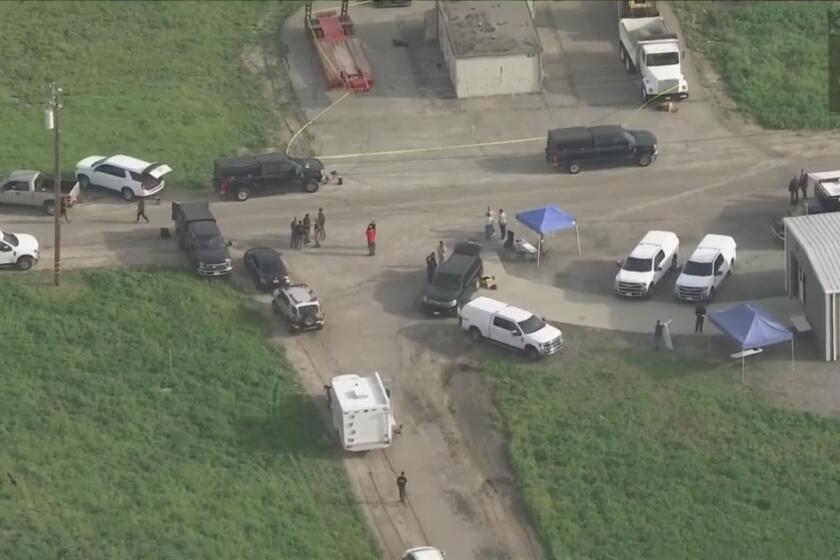10,000 bees ground a CHP helicopter. A beekeeper comes to the rescue

California Highway Patrol pilot Shayne Dickson said he and his partner weren’t quite sure what to do when they discovered thousands of bees had made a home on the nose of their helicopter.
The duo typically responds to a variety of rescue, medical evacuation and search calls for the CHP Coastal Division’s Air Operations team in Paso Robles — but how do you do that with a swarm of bees attached to your chopper?
“We could have to go to a call on a moment’s notice and having the bees on the aircraft are not conducive to operations,” Dickson said. Plus, he said he had never been stung before, and wasn’t about to find out if he was allergic to bee venom while in flight.
“We didn’t want to tempt fate,” Dickson said, laughing as he recalled the March 7 incident.
Commercial beekeeper Andrew Strehlow estimates he’s had 1,000 hives stolen over the years. The latest theft, of 96 hives from a Fresno County orchard, was his last straw.
So their team called local honeybee removal expert Suzi Hulsmann, who was able to meet them on the tarmac and gently vacuum off almost 3 pound of bees — estimated at just over 10,000 bees — plus the colony’s queen.
“The bees were just totally agreeable,” said Hulsmann, who owns and operates her company Suzi and the Queen Team in San Luis Obispo County and keeps bees herself. She said she caged the queen — key to getting the rest of the hive to relocate — within two minutes, and after about 20 more minutes the rest were in a box suitable for bee transport.
“The bees were looking for a new home,” she said, explaining that the swarm likely had to find cover after winds picked up that afternoon. “The helicopter happened to be the temporary location.”

After removing the bees, she relocated them to an empty hive in Atascadero, about 15 miles to the south, where she said the bees quickly made themselves at home.
“We put them in a hive and we put them to work,” she said.
But before the CHP air team got back to work, Dickson said they wiped down the helicopter to try to remove any lingering pheromones from the queen — a recommendation from Hulsmann to ensure the bees wouldn’t return.
“This was a first for me for sure,” Dickson said. “A first for the unit, for that matter.”
More to Read
Start your day right
Sign up for Essential California for news, features and recommendations from the L.A. Times and beyond in your inbox six days a week.
You may occasionally receive promotional content from the Los Angeles Times.







